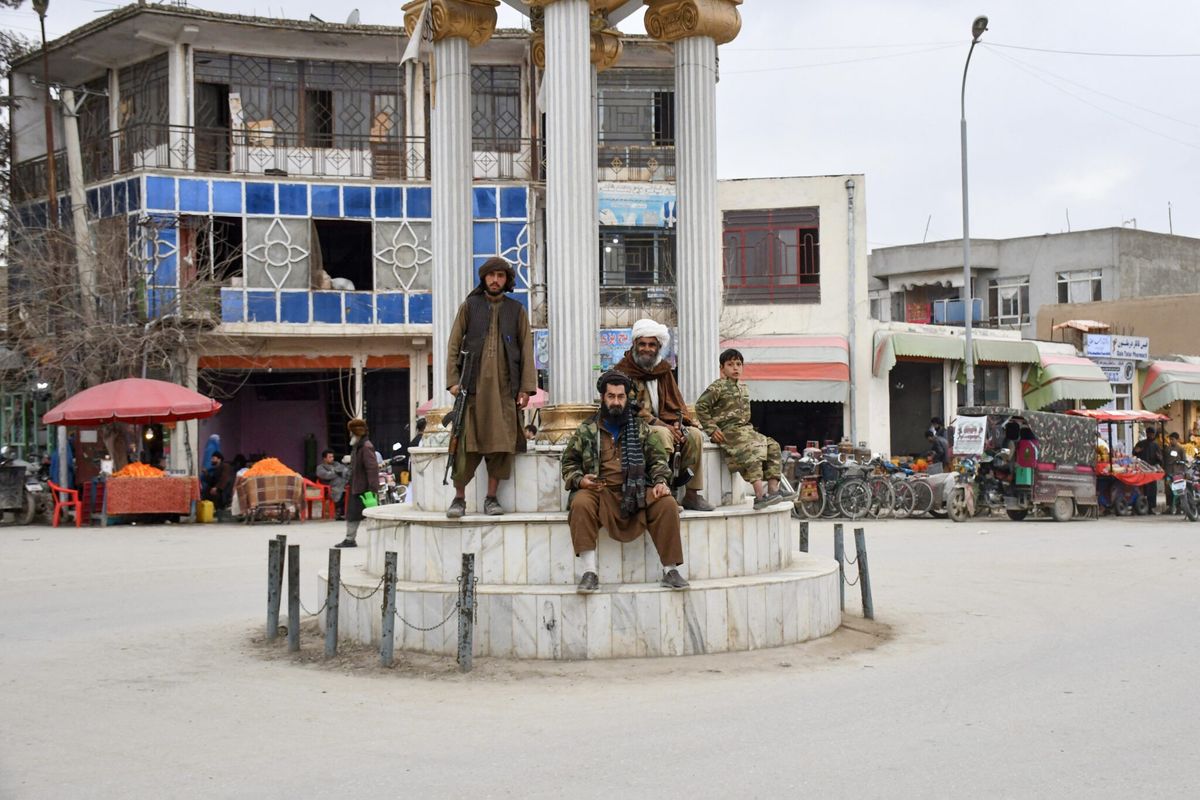Pulitzer Prize Winning Journalist Walter Pincus is a contributing senior national security columnist at The Cipher Brief. He spent forty years at The Washington Post, writing on topics from nuclear weapons to politics. He is the author of Blown to Hell: America’s Deadly Betrayal of the Marshall Islanders (releasing November 2021)
OPINION — For a moment, forget the Biden blame game on exiting Afghanistan. There is plenty enough blame to be shared by former President George W. Bush (diverting to Iraq); former President Barack Obama (surging but withdrawing too soon); former President Donald Trump (agreeing to a quick withdrawal) and President Biden (failing to see a quick Afghan military and governmental collapse).
Instead of blaming, I recommend reading What We Need to Learn: Lessons from Twenty Years of Afghanistan Reconstruction, by the Special Inspector General for Afghanistan Reconstruction (SIGAR) team led by John Sopko, that was released last Tuesday.
For those of us who went through the Vietnam period, reading it is déjà vu. As former National Security Advisor Stephen Hadley told SIGAR, back in September 16, 2015, “We just don’t have a post-conflict stabilization model that works. Every time we have one of these things, it is a pick-up game. I don’t have confidence that if we did it again, we would do any better.”
Better than most analyses, the SIGAR report shows how the U.S. goals changed in each administration and even within administrations.
“At various points,” the report says, “the U.S. government hoped to eliminate al-Qaeda, decimate the Taliban movement that hosted it, deny all terrorist groups a safe haven in Afghanistan, build Afghan security forces so they could deny terrorists a safe haven in the future, and help the civilian government become legitimate and capable enough to win the trust of Afghans. Each goal, once accomplished, was thought to move the U.S. government one step closer to be able to depart.”
But at each point, the proposed goal was never accomplished.
Al-Qaeda was driven from Afghanistan but not “eliminated.” Osama bin Laden moved to Pakistan where he was killed almost a decade later. However, smaller elements of relatively inactive al-Qaeda elements remain, some in Afghanistan.
Meanwhile, the SIGAR report points out, “Beginning around 2003, the remnants of the Taliban regime launched a campaign of seasonal attacks in Afghanistan that grew exponentially.” It was in this period, after March 2003, when the U.S. invaded Iraq, that the Bush administration diverted not only troops but also reconstruction funds to that effort. Bush officials “recognized that they had to resource [Iraq or Afghanistan] more substantially, [and] they chose Iraq because the situation there had degenerated more quickly… They simply didn’t have the forces. …You had several years of calculated neglect [in Afghanistan]…It was intentional,” former U.S. envoy to Afghanistan James Dobbins told SIGAR in a January 11, 2016 interview.
The Cipher Brief hosts private briefings with the world’s most experienced national and global security experts. Become a member today.
It was in that period, as the SIGAR report put it, that “U.S. officials worried that the safe haven once provided to al-Qaeda could very well reestablish itself if the Taliban itself was not also continuously degraded. Unlike al-Qaeda, however, the Taliban were primarily from the country’s south and east, where they enjoyed a modicum of popular support. Adding the Taliban to the list of enemies required a significant expansion of reconstruction efforts to convince more Afghans to turn on the Taliban and support their government. In theory, this approach would help keep the Taliban and (by extension) al-Qaeda out of Afghan communities.” As Stephen Hadley told SIGAR, “We originally said that we won’t do nation building, but there is no way to ensure that al-Qaeda won’t come back without it.”
According to the Defense Intelligence Agency and U.S Afghan Command figures cited in the SIGAR report, Taliban attacks grew from 1,281 in 2003, to 12,333 in 2008. By 2009, the then-new Obama administration faced “a strategy that initially focused on al-Qaeda [that had to be] expanded to include tens of thousands of Taliban fighters embedded within the population, and from there, to a large number of entrenched mid- and senior-level government officials in Kabul and around the country.”
In December 2009, after a year-long strategy review, the SIGAR report says President Obama “decided on an ambitious surge of troops and civilians that would pursue a strategy of counterinsurgency and building the capacity of the Afghan government to protect Afghans and expand its reach. At the same time, he limited the surge to 18 months, at which point it would either be successful enough to scale back, or enough of a failure to justify pulling those resources back anyway.”
According to last week’s report, then-U.S. Central Command General David Petraeus told SIGAR, “The [Obama] timeline was just sprung on us. We had no discussion of that during the process. Two days before the President made the [announcement]…we all got called and were told to be in the Oval Office that night for the President to lay out what he would announce two evenings later. And he laid it out, there. Take it or leave it. He said we’re going to begin the drawdown in the summer of 2011.”
Quoting one of its earlier reports, SIGAR concluded that the Obama administration had “set in motion a series of events that fostered unrealistic expectations of what could be achieved in a few years and ensured the U.S. government’s stabilization strategy would not succeed.” On the economic/governmental side, “despite mounting evidence that the United States had been unable to effectively manage the previous level of funding, reconstruction spending spiked further as U.S. officials scrambled to make the most of the short surge. Spending rose more than 50 percent between 2009 and 2010,” SIGAR found.
It was not surprising that corruption, which had always been a part of life in Afghanistan, “metastasized and swelled to an unprecedented level,” according to a SIGAR 2016 report. Afghan National Security Advisor Rangin Spanta was quoted in a State Department cable from Kabul as having said, “Corruption is not just a problem for the system of governance in Afghanistan; it is the system of governance.” (emphasis added) SIGAR concluded, “By spending money faster than it could be accounted for, the U.S. government ultimately achieved the opposite of what it intended: it fueled corruption, delegitimized the Afghan government, and increased insecurity.”
The Obama military surge also generated a Taliban surge, and Taliban attacks grew to around 30,000 every year from 2010 to 2013, before hovering around 25,000 over the next five years.
However, between 2012 and 2016, during the Obama administration, there was a 63 percent drop in U.S. military assistance and a 72 percent drop in U.S. civilian assistance. “The drawdown laid bare just how hollow the alleged progress had been. Contested territory that had been cleared by U.S. forces was hastily ‘transitioned’ to Afghan officials who were not ready, allowing the Taliban to seize districts as U.S. forces vacated them,” SIGAR said in a 2018 report. Between 2015 and 2018, Taliban forces gained control over 16 percent of the Afghanistan countryside, according to a regular quarterly report put out by the U.S.-led NATO Afghan Mission, which thereafter discontinued publishing that information.
While then-President Trump in his August 2017 Afghanistan strategy speech declared that “conditions on the ground—not arbitrary timetables—will guide our strategy from now on,” his administration continued Obama’s “tendency to draw down troops and resources with little concern for conditions on the ground,” according to last Tuesday’s SIGAR report.
When it was announced that peace negotiations were to begin with the Afghan government and the Taliban in Qatar in late 2020, “the Trump administration announced it would reduce troops even faster than earlier decided, undermining any U.S. leverage that might have been used to motivate the Taliban to negotiate with the Afghan government.”
One fact that has gotten little attention since the Trump administration agreement was signed in February 2020: According to the SIGAR report, U.S. figures show the Taliban in 2020 “significantly increased violence, including assassination campaigns of [Afghan] government officials, journalists, and civil society actors.” Attacks against Afghan forces and targets in 2020 rose to 40,535, a 38 percent increase over the 29,000 in 2019, and the largest number of attacks recorded by U.S. military officials since 2002.
Go beyond the headlines with expert perspectives on today’s news with The Cipher Brief’s Daily Open-Source Podcast. Listen here or wherever you listen to podcasts.
However, that 2020 increased Taliban military activity in Afghanistan avoided attacking targets where fewer American military personnel were located, fulfilling one element of the U.S.-Taliban February agreement. That permitted the Trump administration to claim the Taliban were observing the pact, when in fact, it was disregarding other elements.
SIGAR regularly reported on other failed efforts during the Obama and Trump years, and they are also reflected in last Tuesday’s report. I and others reported about them at the time.
In particular, I remember writing about a June 2019 SIGAR report that discussed Afghan military personnel, sent to the U.S. for training, who went absent without leave (AWOL). That report concluded that such AWOL cases “increased during periods of heightened violence in Afghanistan, and personal safety concerns were reportedly the leading motivation for fleeing inside the United States. Another SIGAR report at that time found “In Afghanistan, retention was a major challenge for the ANSF (Afghan National Security Forces) with
one estimate suggesting that Afghan National Army attrition stood at two percent per month, or roughly 24 percent per year in the mid-to-late 2000s…Soldiers going AWOL was one of the challenges driving those elevated attrition rates.”
Then there were the U.S. nation-building programs based on efforts to create Western-style governance institutions in Afghanistan. My favorite was the more than $1 billion spent between 2003 and 2015 on rule of law programming in Afghanistan, with approximately 90 percent of that funding going toward the development of a formal legal system. A May 2018 SIGAR report found the U.S. program “was foreign to most Afghans, who favored informal, community-level traditional dispute resolution mechanisms, where an estimated 80 to 90 percent of civil disputes have always been handled.” Based on Sharia law, the traditional Afghan system is far more efficient. Former senior State Department advisor Barnett Rubin told SIGAR, “Trying to compete with the Taliban’s successful dispute resolution would have meant allowing Sharia, and that’s not something we could do politically.”
Tuesday’s SIGAR report concludes that “reconstruction missions in conflict-affected countries…usually go poorly…[but that] has not prevented U.S. officials from pursuing them.” The report also says, “rebuilding countries mired in conflict is actually a continuous U.S. government endeavor, reflected by efforts in the Balkans and Haiti and smaller efforts currently underway in Mali, Burkina Faso, Somalia, Yemen, Ukraine, and elsewhere.”
I would suggest the Biden administration pay more attention to the additional $310 million in U.S. aid to Central America's Northern Triangle countries - Honduras, El Salvador and Guatemala – announced last April that is designed to help curb the growing number of migrants who are crossing into the United States. As the SIGAR report warns, “Large reconstruction campaigns usually start small, so it would not be hard for the U.S. government to slip down this slope again somewhere else, and for the outcome to be similar to that of Afghanistan.”
Read more expert-driven national security insight, perspectives and analysis in The Cipher Brief











